#Great Kanto Earthquake
Text
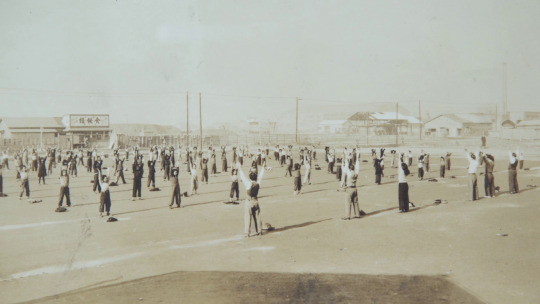
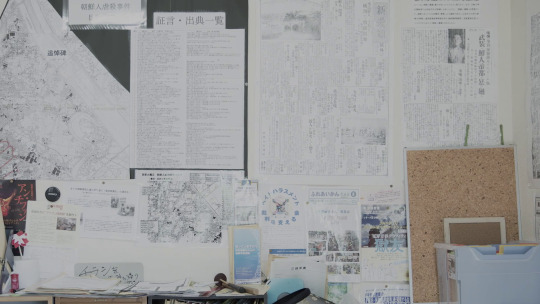
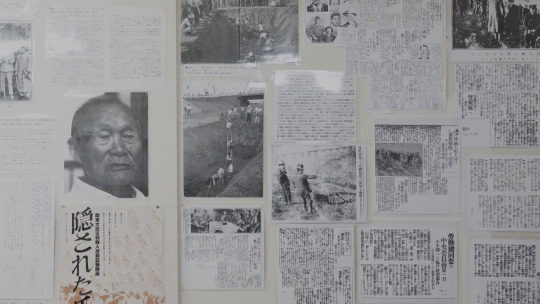

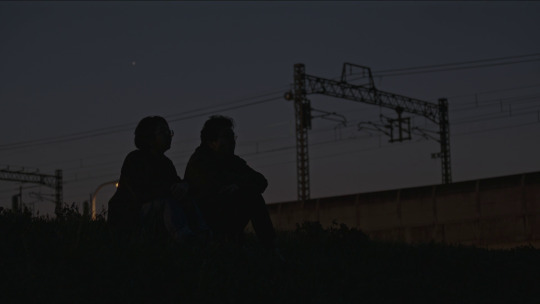

Koki Tanaka
- Vulnerable Histories (A Road Movie)
2019
59 notes
·
View notes
Text
instagram
#Pachinko Ep7, on #AppleTvPlus, a backstory of history 100yrs ago — Sept. 1, 1923 Great #KantōEarthquake
(Yokohama, Chiba & Saitama) & #KantōMassacre, mass murder of #Zainichi, Koreans residing in Japan committed in its aftermath. Japan colonized Korea for 35 yrs from 1910-1945.
2 notes
·
View notes
Text
Realizing Oneness Together: Why Sharing Reiki Healing Matters
Realizing our connection and oneness with each other and the universe, the basic underlying principle of the system of Reiki, is often enhanced in communion with others.
In December 2011, I had been receiving Reiki sessions for about four months and, despite my skepticism, experienced regular benefits and had a series of increasingly significant inner realizations. One night I was sitting in my car after grocery shopping and saw a man on the other side of the parking lot weeping as he was talking to a woman. I felt such empathy with him and had the thought and…

View On WordPress
#connection#Great Kanto Earthquake#healing#Japan#Mikao Usui#Mount Karama#Reiki#spiritual#stress#Tokyo#touch#Usui Reiki Ryoho#Usui Reiki Ryōhō Gakkai
0 notes
Text
Today's Haiku with Picture144

on cloth foundation
the house made
Just a matchbox
布基礎で
作りし家は
マッチ箱
This construction method(布基礎 )became popular after the Great Kanto Earthquake of 1923, and the rigid, immovable frame of the house is vulnerable to impact. It is inferior to the old "main pillar:大黒柱" house.
(2022.09.29)
#cloth foundation#matchbox#布#布基礎#the Great Kanto Earthquake#1923#vulnerable#main pillar#大黒柱#immovable frame#haiku
5 notes
·
View notes
Note
Wait a sec, so if Hiro was a time traveler who fast forward through 100 years did he leave anyone behind in the past like say.. a wife or maybe a child?
Did Hiro have any family ?



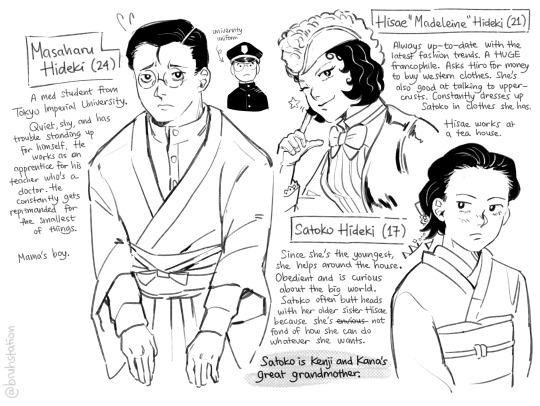

hiro does, sadly. his family never knew what happened to him despite the outrage his disappearance sparked in japan, and hiro in casa tidmouth didn’t know how the entirety of his nuclear family got destroyed by one of japan’s greatest natural catasthropes.
hiro’s wife and children (except satoko) were eventually wiped out the Great Kanto Earthquake in 1923, but he does have descendants of his own that he managed to meet after the events of casa tidmouth’s Hero of the Rails arc.
(more info about them under the cut)
THE YEAR IS 1894.
Hiro Hideki
秀紀 弘 Hideki Hiro
Age: 57 (before transportation, canon Casa Tidmouth is 62)
The patriarch of the Hideki family. Wise, calm, level headed, but has a tendency to overwork himself and put others before himself. He has a mindset of finishing his work first before rewarding himself with the most basic necessities such as eating or going to the bathroom which exasperated Kamome.
Hiro originated from 1894, the Meiji era. Before he was transported to 1994, he’s a civil engineer and railway inspector that was heavily involved during the modernization and westernization of Japan and oversaw the construction of the Tokyo to Yokohama railway in 1872 and its subsequent expansion to Kozu in the following years.
In an attempt to further the connections with the United Kingdom and as part of a collaboration to improvise their engines and railways, the Emperor formed a research group and sent them to England and its surrounding islands – one of them being the Island of Sodor, infamous for its rumored supernatural influence and cases of outsiders going missing (not a great idea, Emperor). Hiro was sent there alongside his colleagues and seniors and the next thing he knew… his environment was alien, his clothes were tattered, he cannot remember anything, and he’s all alone in a steep siding.
Kamome Hideki
秀紀 鴎 Hideki Kamome
Age: 54 (83 at death)
Hiro’s wife. Their marriage was arranged by their parents but Hiro fell in love with her at first sight. While Hiro speaks gently and avoids unnecessary conflict, Kamome is blunt and goes straight to the point when talking. She was constantly seen wearing a tasuki sash and was well-toned for her age. The neighbors and family’s acquaintances see her as a scary woman with a sharp tongue and even sharper eyes, but… that’s just how her face is. Kamome doesn’t take compliments well and instead of smiling, she usually purses her lips or scrunch her eyebrows to express her happiness (Hiro thinks it’s cute).
During the early years of Hiro’s disappearance, Kamome put on a strong facade for their children. She didn’t have much financial worries because their children already had jobs. Hirokazu’s and Akira’s families visit from time to time, and Kamome quickly came into terms with Hiro’s disappearance, but the loneliness and frustration inside her heart still well.
I took her given name from the limited express train service that JR Kyushu operated, Kamome. Her name also means “seagull”.
Hirokazu Hideki
秀紀 弘和 Hideki Hirokazu
Age: 34 (63 at death)
Hiro’s eldest son. He was named after his father. Hirokazu was a serious, rigid man — always bent on following every rule there in his line of work and wouldn't hesitate to reprimand people for messing up. He liked expressing his thoughts (usually related to Japanese politics) without sugarcoating anything and got a knack for debating with his peers, so he’s often exhausted with his father who’s always calm and open to anything Hirokazu says without refuting much of his opinions. Despite being polar opposites, Hirokazu greatly respected and adored Hiro — hence why he followed in his footsteps to become a civil engineer.
Ever since Hiro disappeared, everytime Kamome looked at Hirokazu she felt like he resembled Hiro more and more. Hirokazu’s responsibility in taking care of his family (especially his elderly mother) grew stronger and his need to live up to his father’s legacy eats away at him.
Akira Hideki
秀紀 明 Hideki Akira
Age: 31 (60 at death)
A shy, stoic woman whose social battery drains quickly. She’s soft spoken and doesn’t talk much because of her social anxiety, so he enjoyed conversations with her gentle father more. Akira is also kinda awkward at socializing — behind her neutral face, she’s constantly nervous when faced with a crowd or an unexpected acquaintance of either his father or mother who wanted to chat with her, something she’s extremely self conscious about (Hiro told her she’s fine the way she is). When she succeeded in a conversation, however, she got all fired up and overly proud of herself Akira married a wealthy textile businessman who’s been seeing her for a while and is incredibly smitten with her.
After Hiro went missing, Akira’s husband, mother, and siblings often find her wandering around the train station, sitting solemnly or even asking railwaymen and random passersby if they’ve seen her father. She wasn’t doing mentally well, but luckily her family was there for her.
Masaharu Hideki
秀紀 雅治 Hideki Masaharu
Age: 24 (53 at death)
A student from the Tokyo Imperial University. He studies medicine and was an apprentice of his professor at a hospital in Tokyo. He’s timid, always stressed out, and have trouble standing up for himself, especially against his professor who always reprimand him for even the smallest things such as being late to a conference or being too slow to hand him an operating tool. Masaharu was also a mama’s boy. Kamome fusses over him and always tells him to eat more. Hiro too, but he’s not the most stern.
His professor used his connections to help Masaharu look for his father. Rescue teams, fellow colleagues from Europe, even autopsy labs and funeral homes — he looked everywhere, yet he and Masaharu are stumped. Masaharu felt so useless and even considered dropping out, but Kamome and Hirokazu dragged him back to reality, which made Masaharu end up crying.
Hisae Hideki
秀紀 久愛 Hideki Hisae
Age: 21 (50 at death)
Spunky, stubborn, and always up-to-date. She is IN LOVE with western fashion and a HUGE francophile. She’s a tad spoiled and always asks Hiro for some money whenever new clothes hit the market. Hisae likes dressing up her younger sister Satoko in various clothes she made or bought. She also worked at Irohanayama’s tea house because government officials and their wives always visit in their western attire. She’s also good at talking with people and pleasing upper-crusts. She dreamed of visiting France someday, though this is mostly because of the rose-tinted glasses she has for Europe.
After Hiro went missing, Hisae spent most of her days moping, not wanting to eat or leave her room until Hirokazu and Satoko convinced her to. One day, she suddenly stopped holing herself up in her room, quit her tea house job, and planned on opening her own clothes shop.
Satoko Hideki
秀紀 聡子 Hideki Satoko
Age: 17 (46 during Great Kanto Earthquake)
Being the youngest and most obedient, Kamome frequently asked her to go out to town to run errands. Generally a quiet person, though she always butt heads with her more hotheaded sister Hisae. Most of her clothes during her late teenage years are hand-me-downs from her. She didn’t really have any notable abilities or talents, but she likes collecting hairpins and combs.
In 1923, Satoko survived the Great Kanto Earthquake because she lived at her husband’s hometown far from Tokyo, making her the only living member of Hiro’s nuclear family (some grandchildren from the Hideki family survived but that’s another story. It’ll make this tree longer)
She is Kenji and Kana’s great grandmother.
———
THE YEAR IS 1999.
Kenji and Kana met Hiro during their visit to the Great Kanto Earthquake Memorial Museum. When Kana was taking pictures of the memorial hall for her school assignments, Kana spotted Hiro staring at the list of names. Kenji went to the bathroom for a second, and Kana saw Hiro sitting alone on the bench. Kana sat beside him and sparked a conversation, leading to them eventually becoming friends. Kenji joined them shortly after, and they parted ways soon after it got dark and Kana urged Kenji to take her home so she can print her photos. Hiro bid them farewell, looking wistful but also satisfied with himself.
Neither of them knew that they’re Hiro’s great great grandchildren… until much, much, later.
Kenji Shirogane
白鐘 健二 Shirogane Kenji
Age: 22
Lives in Shinjuku, Tokyo, with his younger sister, Kana. Ever since their parents went abroad for work-related purposes, Kenji has been acting as a guardian for his sister. He studies biomed at Tokyo University in Bunkyou. He goes there via the Yamanote line.
Kenji’s great at cooking and Kana only likes his curry rice because he doesn’t put any “weird” vegetables in it. He likes Japanese variety shows like Takeshi’s Castle and Gaki no Tsukai.
Kana Shirogane
白鐘 華菜 Shirogane Kana
Age: 16
Lives in Shinjuku, Tokyo, with her older brother, Kenji. Second year in high school. She’s in the sports club at her school and is a star for the girls’ running team. A cheerful and hyperactive girl, Kana is rather mischievous and can put on crocodile tears whenever Kenji doesn’t allow her to do something. She frequently gets into trouble at school because of her purple inner dye and grommet belt.
Kana is also quite foul-mouthed and has little respect towards most adults that boss her around, labeling her as a problem child at school. Kenji’s fond of her, but he also describes her as “disrespectful towards older folks”. She would also pull on his nose whenever she’s hungry in the middle of the night and saw Kenji sleeping by the couch to wake him up. However, she truly cares about her family and loves her older brother. Kana’s just a kid being a kid.
#asks#isjssjsjshuuuuuuuuuuuuyyyyyyyyyy#ttte hiro#ttte kenji#ttte kana#kamome (oc)#hirokazu (oc)#akira (oc)#masaharu (oc)#hisae (oc)#satoko (oc)#casa tidmouth#casa tidmouth act 2#senjart#(insert spencer whispering into hiro’s ear about how nobody is waiting for him in japan)
207 notes
·
View notes
Text

Akira Kurosawa with his older brother Heigo. 1913
Akira Kurosawa (right) with his brother, Heigo, ca. 1913
"My brother once forced me to spend a day wandering through Tokyo looking at the victims of the Great Kanto earthquake of 1923: corpses piled up on bridges, corpses blocking off a whole street at the intersection, corpses displaying every manner of death possible to human beings. When I involuntarily looked away, my brother scolded me, "Akira, look carefully now". When that night I asked my brother why he’d made me look at these terrible sights, he replied: "If you shut your eyes to a frightening sight, you end up being frightened. If you look at everything straight on, there is nothing to be afraid of". With my camera, like Dostoyevsky with his prose, I have tried to force the audience—which is often unwilling—to "look carefully now"." ~ Kurosawa Akira (黒澤 明, 1910-1998), Kinema, Spring 1993.
99 notes
·
View notes
Text

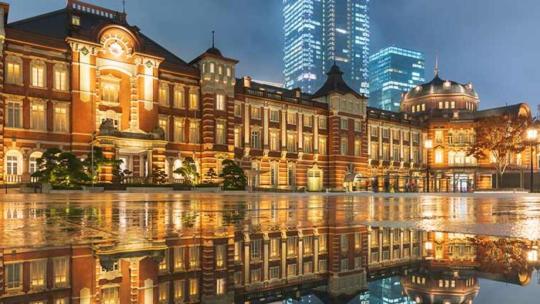
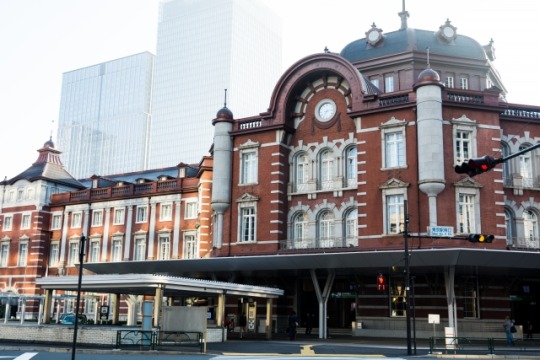

Sean bienvenidos japonistasarqueológicos, a una nueva entrega en la cual hablaremos de la famosa estación de Tokyo, uno de los pocos edificios que ha sobrevivido al paso del tiempo, ya que tras la operación doolittle y el gran terremoto de Tokio de 1923, Tokio ha sido muy remodelada, dicho esto pónganse cómodos que empezamos.
-
En 1908, comenzó su construcción en lo que respecta a la estación central, en 1914 empezó a funcionar, en la era Taisho 1915 Se inauguró el hotel de la estación de Tokio. En el año 1923 tiene lugar el Gran Terremoto de Kanto y el edificio de la estación no está particularmente dañado, se pudo reparar, pero la ciudad de Tokyo fue remodelada por completo y en 2007 realizaron trabajos de restauración, terminado en 2012. Hay que recordar que ha sufrido muchas restauraciones, ya que la de 1945 fue la más letal de todas.
-
Espero que os haya gustado y nos vemos en próximas publicaciones ¿Conocían este edificio y su historia? Que pasen una buena semana.
-
今回は、有名な東京駅についてお話します。ドゥーリトル作戦や1923年の東京大震災の後、東京は大きく改造されましたが、その中でも数少ない時代の流れに耐えた建物の一つです。
-
1908年、中央駅の建設が始まり、1914年に開業、大正時代の1915年には東京ステーションホテルがオープンしました。1923年に関東大震災が起こり、駅舎は特に被害はなく、修復されましたが、東京の街は完全に改造され、2007年に修復工事が行われ、2012年に完成しました。1945年の震災が最も致命的であったため、何度も修復が行われたことを忘れてはならない。
-
この建物とその歴史を知っていましたか?それでは、今週もよろしくお願いします。
-
Welcome to a new installment in which we will talk about the famous Tokyo Station, one of the few buildings that has survived the passage of time, since after operation doolittle and the great Tokyo earthquake of 1923, Tokyo has been greatly remodelled, that said, make yourselves comfortable and let's get started.
-
In 1908, construction began on the Central Station, which became operational in 1914, and in the Taisho era 1915, the Tokyo Station Hotel was opened. In 1923 the Great Kanto Earthquake took place and the station building was not particularly damaged, it was repaired, but the city of Tokyo was completely remodelled and in 2007 restoration work was carried out, completed in 2012. It should be remembered that it has undergone many restorations, as the one in 1945 was the most lethal of them all.
-
I hope you liked it and see you in future posts. Did you know this building and its history? Have a nice week.
#日本#駅#東京#丸の内#銀座#歴史#建築#芸術#写真#関東地方#新宿#池袋#新橋#Japan#Station#Tokyo#Marunouchi#Ginza#History#Architecture#Art#Photography#Kanto region#Shinjuku#Ikebukuro#Shinbashi
64 notes
·
View notes
Photo
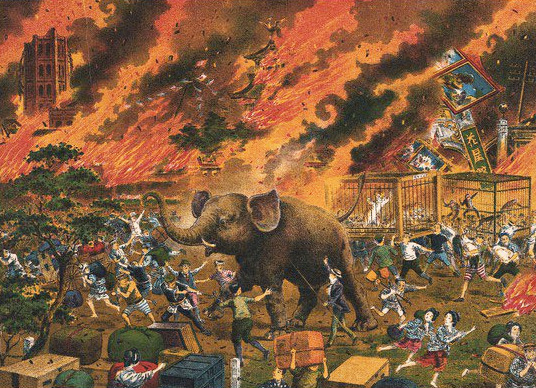
A never-before-seen print was discovered at Japan’s oldest amusement park depicting an elephant (oddly named Johnny) being led to safety during the aftermath of the 1923 Great Kanto Earthquake. Text by Spoon & Tamago
198 notes
·
View notes
Text
The synopsis of Bubblegum Crisis is so unintentionally funny.
The year is 2032, seven years after the Second Great Kanto Earthquake decimated Tokyo. Now, the city is reborn as MegaTokyo, built from the labors of mechanical beasts known as "Boomers."
Under the ever looming Boomer threat, a group of four girls from varying degrees of society banded together
While spending a night out, Linna Yamazaki, a new employee at the Hugh-Geit Corporation (a Genom subsidiary), observes a Boomer that has “gone rogue”, causing destruction and attacking people.
Over the course of the series, the Knight Sabers go after rogue boomers
38 notes
·
View notes
Text
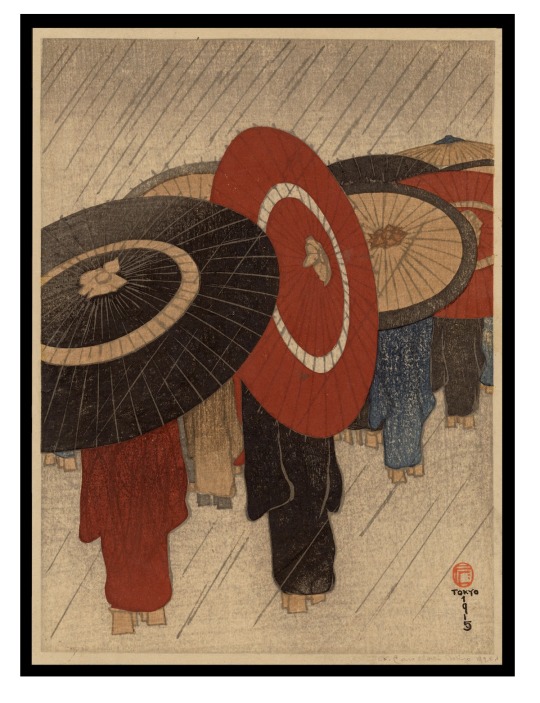
Capelari, Fritz (1884-1950)
Returning Home in Rain, 1915
Woodblock print
Connoisseur's Note
Returning Home in the Rain is an exceedingly rare work. The great Kanto earthquake of 1923 destroyed the original Watanabe print shop and studio, including the printing blocks and unsold inventory for this design. Only impressions of this design sold before the earthquake and removed from Tokyo survived the earthquake and ensuing fires that consumed the city.
14 notes
·
View notes
Text


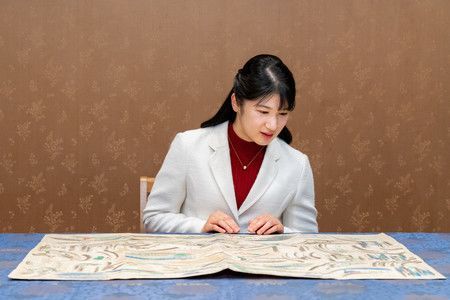
Japanese Princess Aiko, the only child of Emperor Naruhito and Empress Masako, turned 22 on Friday, as she is leading a busy and fulfilling university life.
The princess is currently in her final year at the Faculty of Letters at Gakushuin University in Tokyo. After pandemic-related restrictions were lifted in the country, in-person classes resumed for many courses at her university.
She started to attend classes on campus this spring. Based on literature from Japan's Heian, Kamakura, Edo and Meiji periods, she is working on her graduation thesis. Meanwhile, the princess enjoyed the university's school festival in November, according to the Imperial Household Agency.
In addition to Japan's traditional culture, the princess is interested in welfare activities. In October, she and her parents visited the headquarters of the Japanese Red Cross Society to see a special exhibition on relief activities following the 1923 Great Kanto Earthquake.
She also looked around the permanent exhibition there and seemed to be impressed by the involvement of Empress Dowager Shoken, the wife of Emperor Meiji, in the early years of the organization's activities.
Source
#princess aiko#emperor naruhito#empress masako#japanese imperial family#imperial family of japan#japan#japanese monarchy
21 notes
·
View notes
Text

A birthday gift for my dear friend @akatsukitrash , a fanart of his OC Senju Akemi with her cousin Tsunade, based on the eighth chapter of their fic Far Beyond The Woods of Dawn. It is a beautifully written fic with exceptional characterization, fascinating worldbuilding, and immersive writing. I absolutely adore it.
The chapter depicts a ceremony to bond a Mokuton wielder to their guardian. There's a lot of symbolism in the chapter itself, but I ended up adding my own in this fanart 👀
The descriptions of their ceremonial clothing in the fic is as follows:
“Tsunade looks at herself in the mirror, fixing invisible wrinkles in her simple, light green kimono.”
×
“Akemi enters and is guided by a nun to the pillow in front of Tsunade. She’s paler than normal, wearing a pure white kimono. Their clothes have to match their chakra colours. It’s tradition.”
×
“Kiyomi kneels beside [Akemi] and caresses her hair, nicely done into a bun held by an ornamental hairpin.”
I first decided to give Akemi a hairpin adorned with ginkgo leaves, as its name in my native tongue, “tree from the dawn of the world”, immediately reminded me of Akemi as a character.
As for the other reasons I have chosen ginkgo:
“In Asia, the ginkgo is considered a holy tree and is often found near temples and other places of worship. In Buddhism, Taoism and in the teachings of Confucius, the tree has acquired great symbolic significance, representing long life, vitality, and hope. In China, the ginkgo tree is also called "Buddha's fingernail".”
×
“Ginkgos, like cedars, are resilient survivors. They have deep roots and can tolerate adverse conditions, including wind, pollution, and fire. Notably, these trees withstood the 1923 Kanto earthquake and even survived an atomic blast, the 1945 atomic bomb on Hiroshima, even when located less than 1½ miles from the epicenter. Despite scorched bark, stripped branches, and the destruction of a nearby temple, the ginkgo trees remarkably survived and leafed out the following spring.”
×
“For centuries the ginkgo tree and leaves have been seen as a symbol of peace and hope, aiding to its continued presence throughout human history.”
×
“Another powerful example of the importance of the ginkgo tree as a symbol for hope, is the survival of the gingko tree, known as the "bearer of hope" that survived the bombing in Hiroshima. This tree is regarded as a symbol of hope, and prayers for peace and healthfulness have been engraved into its bark.”
The Senju are Buddhist in the fic, drawing from the Buddhist imagery surrounding them in canon, and ginkgo leaves just felt appropriate for that. I shan't talk much of Akemi herself since I don't want to spoil the future arcs and chapters Idir has planned, but in my opinion... yeah. The ginkgo is very suited for Akemi in particular.
I will get to the camellia in her hair, in both their hair, later.
I also decided to give Akemi a chihaya to wear over her kimono— chihaya tend to be worn by Shinto priestesses during religious ceremonies— and in Japan there is much incorporation and syncretism between Buddhism and the Shinto faith. A variant of chihaya (or perhaps chihaya is a variant of it) was apparently worn in the Heian court by nobility, and was called “kariginu”.
And then there is the wisteria ornament in Tsunade's hair.
“The wisteria is associated with youth, love, perseverance, immortality. The Japanese name for wisteria, "fuji" can also mean "immortality" [fu: no, lacking + ji/shi: death] and Mt. Fuji's name is also tied to immortality.”
×
“The wisteria also features a lot on Japanese family crests too, and the "Fujiwara" were a very prominent and powerful family in the history of Japan who kept marrying their daughters into the imperial family.”
Considering Tsunade's prowess with healing, her youth and vitality, the wisteria seemed like a good fit to her. The wisteria hair ornaments I've seen typically have two colours, purple and white, but I decided to just keep it white because it's like Tsunade has a piece of Akemi in her hair, and Akemi has a piece of Tsunade in her hair, and they both have matching camellias in their hair.
It's very neat, imo.
And then! We get to the camellias.
The tsubaki/camellia symbolize gods and the divine, and apparently used in religious rituals though I don't know how. They are offerings to the gods, they're sacred, they also symbolize faithfulness and longevity though they also symbolize a noble death (associated w the samurai) because rather than losing petals apparently the entire blossom just falls off the stem, and which is why it's a terrible idea to give a sick person a camellia as a gift because the flower beheads itself, essentially.
Those who awaken the Mokuton among the Senju are thought to be sacred, closer to Buddha and the gods, and the camellias felt like a good way to pay homage to that.
Anyways, Idir, I hope you like my gift!
Some close-ups:

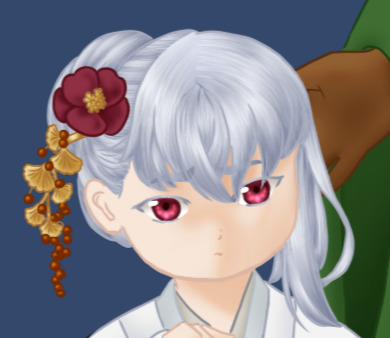
#rotten egg's shitty art#naruto#naruto fanfiction#naruto oc#naruto fic#senju akemi#senju akemi (oc)#akemi senju#akemi senju (oc)#tsunade#senju tsunade#tsunade senju#far beyond the woods of dawn#drag my dark into the dawn
17 notes
·
View notes
Text

二の丸隅櫓
江戸時代、小田原城には5棟の二重櫓と1棟の平櫓がありました。この櫓は、関東大震災(大正12年:1923)後に再建された櫓で、二の丸隅櫓とも呼ばれています。延宝元年(1673)もしくはその翌年に2間 x 6間(約3.6m x 11m)土蔵としてはじめて建設されました。しかし、元禄16年(1703)の地震により倒壊し、奥行2間、折廻し7間(約13m)の鍵の手状の平櫓として再建されました。
小田原藩主居館がある二の丸の南東の隅に位置し、三の丸の大手門を入ると正面にこの平櫓が立ちはだかることになります。また、二の丸への入り口である馬出門を見下ろす位置でもあります。当時の櫓内部では武具等が保管され、小田原城防御の要とも言える櫓でした。
この平櫓だけが小田原城内唯一の建物として残されましたが、関東大震災により失われてしまいました。
現在の櫓は、江戸時代のものとは異なり、大きさは一回り小さいものとなっています。
During the Edo period, the Odawara Castle had five Niju Yagura (two-story turrets) and one Hira Yagura (single turret). This one is a single turret also known as a Sumi Yagura (Corner turret) of Ninomaru.
Storing arms and weapons inside, the turret, keeping an eye on both Ote-mon as well as Umadashi-mon Gates, had the most important role in a defense of the Odawara Castle.
In Meiji period, after many structures within the complex of Odawara Castle were demolished, only this Hira-yagura turret remained.
However, it was destroyed by the Great Kanto Earthquake of 1923, and the present one was reconstructed later. Unlike the one in the Edo period, the present turret here is a size smaller.
[Chinese]
Top picture:
The Imperial Villa, Odawara 邸用御趾城原田小
明治42年(1909)〜大正12年(1923) 頃の姿
Bottom picture:
Goyote Odawara, Sagami 邸用御原田小州相
明治42年(1909)〜大正12年(1923) 頃の姿
*Note, the Japanese on the first lines of these pictures appear to be backwards on the original.
Vocab
櫓 (やぐら)turret, watchtower
延宝(えんぽう)Enpō era (9.21.1673-9.29.1681)
元年 (がんねん)first year (of an imperial era)
もしくは or, otherwise
間(けん)ken (6 shaku, approx. 1.818 m)
土蔵(どぞう)storehouse with thick (earthen) walls
元禄(げんろく)(Genroku era (9.30.1688-3.13.1704)
倒壊(とうかい)destruction, collapse
奥行(おくゆき)length
折廻(おりまわり)to provide the bend for the kagi no te
鍵の手(かぎのて)section of road that is curved on purpose as a defensive measure (see here)
藩主(はんしゅ)feudal lord, daimyo
居館(きょかん)residence, estate
大手門(おおてもん)front castle gate
立ちはだかる(たちはだかる)to stand in the way, block the way
馬出(うまだし)Umadashi
見下ろす(みおろす)to overlook, command a view of
武具(ぶぐ)weapons, armor
保管(ほかん)custody, storage
防御(ぼうぎょ)defense, safeguard
要(かなめ)cornerstone, vital point
唯一(ゆいいち)only, sole, unique
異なり(けなり)unlike
一回り(ひとまわり)one size (larger or smaller)
城趾(じょうし)castle site
御用邸(ごようてい)imperial villa
#日本語#japanese language#japanese langblr#japanese vocabulary#日本#japan#日本歴史#japanese history#odawara#小田原城
14 notes
·
View notes
Photo

City Skyline on Harbor Waterfront
Location: Bankoku Bridge, Naka-ku, Yokohama, Kanagawa, Japan
Timestamp: 19:56 March 15, 2023
This photograph captures the stunning night view of the Minatomirai waterfront district, as seen from the Bankoku Bridge. Originally constructed in 1903 and surviving the 1923 Great Kanto Earthquake, the current span was rebuilt in 1940. The name "Bankokubashi" translates to "bridge to 10,000 countries," which reflects its early significance in facilitating international trade through the Port of Yokohama.
Initially, the bridge served as the primary access point to the newly reclaimed land used for the Port of Yokohama and the customs house. Today, it has become a popular attraction for tourists and photographers seeking a picturesque view of the Minatomirai skyline. Furthermore, the Bankoku Bridge is one of the main entry points to the Red Brick Warehouse quarter.
The image also shows a long-exposure shot of the vibrant, rainbow-colored lights of passenger pods on the Yokohama Air Cabin urban ropeway connecting Sakuragicho Station with the World Porter’s department store. The ropeway, which started operating in April 2021, is the latest addition to the waterfront skyline.
Fujifilm X100V (23 mm) with 5% diffusion filter
ISO 3200 for 13.0 sec. at ƒ/11
Classic Chrome film simulation
#ストリートスナップ#横浜#みなとみらい#万国橋#pix4japan#Fujifilm X100V#street photography#Japan#Yokohama#Bankoku-bashi Bridge#Minatomirai Skyline
54 notes
·
View notes
Text
Propaganda for the Ushiromiya family
CW: murder, rape, incest
"PEAK weird family drama. Fighting over the inheritance leads to multiple people dying in gruesome ways"
"The whole plot of the game is that they all are so dysfunctional it would make sense for any of them to commit murder"
"Grandpa fucks an Italian who murders the entire family and then his grandson gets fucked by the same Italian in hell"
"The Rokkenjima Mass Murders would not have happened to a functional family"
"The parents claw at each others' throats for a vast family inheritance, the kids/cousins fool around, and then they all murder each other/get murdered"
"This family is dysfunctional and abusive on every levels. The parents are fighting for the inheritance, because the elder embezzled money. The grandfather, Kinzo, hides in his room and never shows up. Not unusual, he neglected his family his whole life. Seems that he preferred a mysterious mistress than his family. When he talked to his children, it was to scold them for being incompetents. The atmosphere is oppressive. The children of Kinzo were bully. Krauss bullied Eva, who bullied Rosa. Concerning the next generation: Battler is in conflict with his father because he cheated on his mother. Natsuhi is putting pressure on Jessica for her to become the heir of the family, and is losing contact with her daughter. Eva has deciced what the life of Georges is becoming, and that he will not marry a servant. As for the relationship between Rosa and Maria, this is just the best mother-daughter love-hate relationship ever. And everything ends in blood, for ever and ever."
"/*\ Major spoilers here /*\
This family is dysfunctional on *every* levels. The leader (Kinzo) neglected his wife and his children. We later learn that he hid a secret daughter that he raped. He neglected his family. Children were bully between each other. As Kinzo is approaching is death, his four children are fighting for the inheritance. We later learn that Kinzo is already dead but his first son (Krauss) and his wife (Natsuhi) are hiding his deaths, because they have embezzled money and if the death of Kinzo was public, their schemes would be revealed. The love/hate mother-daughter relationship between Rosa and Maria is amazing. Rosa is a single mother. She loves her daughter, but also hates her because she gets in her way in her personnal and sentimental life. She neglects her, but she stills love her. There is also the strange love conflict between the alters of the offspring of the grandfather with her own daughter and the grandchildren, but this is already a lot."
Detailed, 3000 word history of the Ushiromiya family below the cut:
Prefacing this with a CW for grooming, mentions of fascism, SA, attempted infant death, abuse, incest, suicide, child death, stillbirth, drowning and major Umineko spoilers.
So, what makes the Ushiromiya family so fucked up?
Well, it all starts back in 1923 during the Great Kanto earthquake when the mansion belonging to the Ushiromiya family was destroyed, most members of the family and their wealth perishing in the earthquake and the spinning mills, the things that made them so successful in the first place, were all destroyed in a fire due to the earthquake.
After this tragedy, for a while it was unknown who would be the successor to the Ushiromiya family, whether it be someone in the main family or someone in another branch of the family, like Kinzo was. Funnily enough, it seemed as though no one in the main family was applicable for the role of successor, and so it was decided that the successor would be none other than Kinzo Ushiromiya himself (partially due to his polydactyly (six toes) which was seen as a sign of good fortune in the Ushiromiya family).
Skip ahead about 20 years, during which Kinzo essentially disassociated (for lack of a better term) and ended up in an arranged marriage, producing 3 children (Krauss, Eva and Rudolf) and spending his time getting drunk and reading a LOT of Western books. During this time, Kinzo eventually started to feel as if he was slowly dying. Come WWII, Kinzo decided to enlist in the Japanese army so as to find a way to die and not feel like a puppet being controlled by a bunch of different people.
It's 1944 and KInzo is stationed on an island that functions as a military base. A submarine containing members of the Italian Social Republic (a group of Italian fascists who couldn't accept Italy's surrender) and a bunch of Italian fascism gold wind up on the island, one of the people in the ship being the 19-year-old Beatrice Castiglioni who over time begins to form a romantic bond with Kinzo who, keep in mind, was in his 40s at this time.
To skip ahead a bit, the Italians pull out the gold from the submarine, the Japanese soldiers get greedy and want some of the gold and tension starts brewing between the two until someone (in the manga it's revealed to be KInzo himself) causes a stunt that results in the deaths of *everyone* on the island minus Beatrice and Kinzo. They escape on a boat where Kinzo took Beatrice to a doctor (who would later become a lifelong friend of Kinzo's, for better and for worse) and Beatrice was stationed in an unused villa.
This is where Kinzo's double life began (living with both his arranged wife and his children who he abused and they in turn abused each other), years later their affair producing a child, Beatrice II (during this time, Kinzo had one more child with his wife, Rosa). Unfortunately, the birthing process resulted in the death of Beatrice Castiglioni. With the daughter of his love affair and after having used some of the Italian fascism gold to build connections and do some war profiteering, Kinzo bought the island where he met Castiglioni, named it "Rokkenjima," and built two mansions: one for his main life with his wife and kids, and another for Beatrice II, which would be named "Kuwadorian."
To skip more time, Beatrice II grows older and older and Kinzo falls deeper and deeper into the madness that his daughter was Castiglioni reincarnated, making her dress more and more like her until one day he raped his daughter and impregnated her with a child that he named Lion.
Sometime after Lion was born, Rosa met Beatrice II when she was 12-14 and Beatrice II around 19 years old. They became friends and an interest in seeing the outside world was sparked inside Beatrice II due to having been kept inside Kuwadorian for almost her entire life. So, Rosa took Beatrice II outside of Kuwadorian but, uh oh, she fell off a cliff and died leaving Lion all by themselves.
Kinzo gives the baby to Natsuhi (wife of Krauss) and this is where things get...complicated. There's two different timelines involving Lion: one where they (and a servant) are pushed off a cliff by Natsuhi due to the act of Kinzo giving her the baby making her feel like he was mocking her due to her then inability to produce a child (though she would later give birth to a daughter, Jessica), and one where they weren't thrown off a cliff and were adopted by Natsuhi and Krauss. For the purposes of this submission, we're going with the timeline where they were thrown off the cliff.
So, Lion is thrown off the cliff and severely injured but they're discovered by two servants: Dr. Nanjo (the doctor who originally tended to Beatrice Castiglioni) and Genji, a childhood friend of Kinzo's who later became a servant of his, and they tended to their injuries as best as they could (including amputating the baby's polydactyly but "carelessly" leaving a scar so that KInzo could identify them one day) and placed them in an orphanage house that Kinzo built for potential servants of his family (named Fukuin House), and they were given the name "Sayo Yasuda" and raised as a girl despite them being AMAB.
Meanwhile, while all this is going on, Eva got married to a man named Hideyoshi and had a child (George) to keep herself in the family registry and have a chance of becoming the successor once Kinzo kicks the bucket and Rudolf was married to a woman named Asumu but was two-timing her with another woman named Kyrie Sumadera and he impregnated the both of them but when they give birth 9 months later, Asumu's child was stillborn and Rudolf bribed the doctors into switching the babies so that his legal wife would be the one who gave birth to the surviving child and his mistress would've been the one who had a stillborn child. This surviving child would be raised as Battler Ushiromiya, a child that Kyrie would resent for the rest of her lifetime because of the belief that he was born from Asumu, a woman that she not only hated but was completely willing to murder because of her obsession with Rudolf.
Back to Sayo and, as she got older, Genji decided to fake Sayo's age and say she's 3 years younger than she actually is so that Natsuhi and Kinzo wouldn't be able to find out who she is. This included keeping her isolated inside Fukuiin House constantly with no friends so that they wouldn't notice any discrepancies between Sayo's physical body and her age. This all happened at the same time as Rudolf and Kyrie building a company, comitting massive amounts of fraud and driving their rivals into such huge debts that they committed suicide and, a few years later, Rosa creating a fashion company.
Skip ahead a few years to when Sayo was 9 but pretending to be 6, this is when Genji arranged for her to work as a servant under the name "Shannon," while Sayo herself treats "Shannon" like an imaginary friend and the ideal person that she wants to become.
Over the following few years, Sayo acclimated to life as a servant despite the teasing and mistreatment she receives from older servant/former Fukuin House members, and to cope with losing things, she creates a witch by the name of Beatrice who is responsible for her losing things. During this time, the servant Kumasawa helped Sayo learn various tricks to keep a hold of her things, framing them as magic rituals to keep Beatrice from stealing her things. The same happened when Sayo accidentally broke a vase that was important to Kinzo.
As a side note, because Sayo was disfigured due to the cliff incident and subsequently raised as a girl, her hormones are all fucked and she has a rather androgynous appearance which she despises along with her lack of periods, which resulted in her both despising mirrors and avoiding them at whatever cost and padding her chest. Keep all this in mind as it will come into importance later.
On a happier note, Sayo developed a love for mystery novels which she used to bond over with Battler, especially in regards to the motives of the culprits, over his multiple visits to the island of Rokkenjima during the annual family conferences the adult Ushiromiya family members would have over Kinzo's inheritance. Also around this time, Rosa's daughter, Maria, was born but Maria's father had abandoned her & Rosa shortly after Maria was born.
Skip ahead a couple years (now 1979) and the older servants have left the Ushiromiya mansion and new ones took their place, and Sayo, at this point 12 but pretended to be 9, was the one who had to train them. Being the kind of person she was, she told the new servants about the witch Beatrice, but one of the servants didn't believe her so she pulled a series of elaborate pranks that resulted in the servant believing in the witch, out of a sense of fear if nothing else, and because of these incidents, Sayo abandons the idea of becoming an ideal servant and embraces being a witch, revising her lore so that the witch Beatrice is now a close demon friend named Gaap and she is the witch named Beatrice instead.
One year later, in 1980, Battler, now 12, visited Rokkenjima for the final time and told Sayo, 13 who pretended to be 10, that when she was ready to quit being a servant he would come for her riding on a white horse and gave her until the next family conference in 1981 to decide whether she would accept or not. Meanwhile, George, now 17, would watch the interactions between Sayo and Battler and get extremely jealous.
However, before Sayo could tell Battler her decision, tragedy struck in the form of not only Asumu's death but Rudolf getting married to Kyrie shortly after Asumu's death (and have her give birth to Battler's sister, Ange), which pissed off Battler and caused him to not only leave the Ushiromiya family but also completely forget about his promise to Sayo. This, understandably, made her upset but she convinced herself that it was a trial of love from God and held onto this belief, even when Battler didn't show up for the family conference in 1981.
During the period between 1981 and 1986 (where the story primarily takes place), numerous years-long events took place, but the most important ones are: Maria meeting a priest who convinced her she's a child of God which led to her interest in the occult, Rosa starting to neglect Maria to go on trips with men which led to Maria getting isolated and bulled at school, Sayo started appearing as Beatrice during Maria's trips to Rokkenjima and convincing Maria she was a witch via magic tricks, Rosa getting a cheap plush for Maria but lying and saying it was made by her, Sayo building her lore by both pulling pranks on people and creating more magic OCs based on real people she knew along with magic OCs based on Maria's toys, Sayo becoming close friends with Jessica, Rosa assaulting a CPS officer and destroying Maria's plush (but using her wealth and influence to cover up everything) and Krauss embezzling Kinzo's money to the point of using the Rokkenjima mansion itself as collateral after multiple bad financial decisions.
In 1982, Battler does not attend the conference once again, which led to Sayo questioning if he was actually serious at all.
In 1983, Battler doesn't attend the conference again, but he sends letters to all his cousins but not to Sayo (either that or the one handing out the letters to everyone, George, stole the letter to Sayo). This incident broke Sayo completely, which resulted in her not only pushing her feelings for Battler onto Beatrice, but she also started experimenting dressing as a guy, specifically the servant Kanon (a representative of her negative feelings so that Shannon could be purely positive), which both Genji and Kumasawa were supportive of. Also during this year, Kinzo found out about Sayo's polydactyly and started to get close to her, which included him teaching her how to use guns.
In 1984, Kinzo hung a portrait of the witch Beatrice in the main hall of the mansion along with an epitaph that was a secret riddle that anyone could solve with the reward being not only the location of all the Italian fascism gold (which at this point had become a myth within the Ushiromiya household) but also the position of successor of the Ushiromiya family; in actuality, this was a final gambit Kinzo had pulled to see if the child of Beatrice II could solve it and inherit his position. During this year, George (now 21) and Sayo (now 17 but pretended to be 14) started to get more romantic in their interactions after a failed marriage interview at the behest of Eva. One day during this year, Genji had given Sayo a hint towards solving the epitaph and over the following months, she spends her free time solving the riddle.
November 29, 1984. Sayo solved the riddle and discovered the location of the gold. Genji had her put on the dress of the witch and go up to Kinzo's study, where she learned the truth that she's the product of Kinzo's incestuous rape of his daughter. Kinzo apologized for everything and, feeling content that he had tied up loose ends, dies after giving her the ring that signifies the head of the family, though she later asked the servants to continue to act as if no one had solved the epitaph and keep things going as normal.
After she learned this information, Sayo was completely destroyed by the fact that not only was she the product of incestuous rape, but also that her body could not bear children, the Ushiromiya family is one full of betrayal, abuse and bloodshed and the knowledge that her romantic attraction to George and Battler are both incestuous, which drove her into complete and utter despair.
In other news, not long after this, Natsuhi found out that not only had Kinzo died but also that her husband was embezzling his funds. She & her husband mutually decide to cover up Kinzo's death and act as if he's still alive.
In 1985, a man by the name of Gohda starts working as a chef at the Ushiromiya mansion, Sayo began feeling attracted to Jessica as Kanon (even though she knew this love was incestuous, further driving her into despair), and Jessica started falling in love with Kanon.
In 1986, multiple members of the Ushiromiya family fell into positions where they would need the gold and Battler had not only returned to the Ushiromiya family but also announced he would be attending the family conference that year. Sayo (now 19 but pretending to be 16), upon learning this news, is driven into madness by both her hopeless circumstances and the combined weight of the sins of the Ushiromiya family. From this point on, she would not only write multiple murder-suicide plans but also make extensive preparations to kill everyone at the family conference of 1986, including testing decades-old explosives, converting a billion yen's worth of gold and sending it to the families of the soon-to-be victims of her murder plans, asking the servants to be accomplices in the murder scheme (albeit in the form of them thinking it would be a fun little murder mystery prank, aside from Genji who knew the full extent of what Sayo wanted to do) and sending her murder suicide fanfictions into the sea inside wine bottles, effectively creating a catbox where anything could theoretically take place on the night of the murder.
October 4, 1986. Everyone in the main Ushiromiya family with the exception of a 5-year-old Ange staying home sick attends the conference. Maria reads out a letter from Beatrice (written by Sayo) convincing everyone to try and solve the epitaph before Beatrice started slaughtering the Ushiromiya family in return for them not solving the epitaph, and George proposes to Shannon.
Surprisingly, the adults actually solve the epitaph and find the location of the gold, effectively putting a stop to Sayo's murder plans. While the adults are overjoyed at first, tensions rise and a gunfight breaks out, resulting in Eva (accidentally) killing Natsuhi, Hideyoshi (accidentally) killing Krauss and Kyrie killing Rosa and Hideyoshi.
From this point on, Kyrie and Rudolf decide to slaughter everyone on the island, blow the whole thing up and take the gold for themselves. Kyrie shoots Eva and Sayo as Beatrice and they leave the room with the gold. Kyrie and Rudolf lie to the cousins and say that Kinzo is doing a test to see which of them is the most worthy of being the successor and ask them to come to separate areas. Jessica is killed by Kyrie, Rudolf kills George and, after they briefly meet up again, Kyrie kills Gohda, Dr. Nanjo, Genji and Maria. Eva wakes up and looks for Rudolf, finding him underneath the door of a chapel on the island, waiting for Battler. She kills him and, subsequently, kills Kyrie, running to Kuwadorian afterwards and surviving the explosion.
Meanwhile, Sayo survives Kyrie shooting her and changes her mind about the murder-suicide plan, finding Battler, rescuing him and taking him to the secret submarine area where the two of them attempt to escape in a motorboat before Sayo jumps into the water with a gold ingot to drown herself, Battler jumping in attempting to save her, with the result being that she, unfortunately, drowned to death and he was left in a daze that effectively erased his identity as "Battler Ushiromiya" and, for the most part, bringing an end to the dysfunctional, bloody and tragic tale of the Ushiromiya family.
31 notes
·
View notes
Note
Lemme start by saying, I don’t know if someone has said this before. Or if it’s been confirmed by the author/creator of Assassination Classroom (I would love to be informed if it was, though. I need AC content). It’s just something I noticed and thought was cool, so I decided to share:
Korosensei’s tie has a crescent moon design. To be more specific, a waxing crescent moon design.
It’s interesting because the academic year of the Assassination Classroom is widely speculated to be 2014-2015. Since Aguri and Korosensei met a year before, it’s reasonable to say that they met on March 13, 2013.
The moon phase on March 13, 2013 was a waxing crescent moon.
Aguri gifted Korosensei a necktie with a waxing crescent moon embroidered into it on the anniversary of their meeting. She put so much thought into that gift, to the point of incorporating the moon phase from the day they met. And I think that’s beautiful.
I have sad feels now.
Thoughts?
It's a neat idea! The manga was first serialised in Jump July 2012 though, so the speculation is probably a bit off. To me, it's most likely the series is set relatively contemporaneously. So you can take the original moon explosion as 2012 or 2013. There's one very specific part of the manga that does help date it, though.
Prewarning, this turned into niche ramblings.

I do not currently have access to the Japanese version of this scene, but I disagree with the fan translation here. At their own admission, they interpreted him to be talking about a specific earthquake, where in reality he just says "the earthquake". I also went and checked this with the anime, and he does not give a specific event.
I mean, the Great Kanto Earthquake happened in 1923, which would make Karma some kind of time traveller if this was true. As someone who used to live in the same rough area Kunugigaoka is set, I promise you there are a lot of earthquakes. To the point you get used to them. Most certainly wouldn't be a 'state of emergency'. No. If you're saying The Earthquake, the most likely option is the 2011 Tohoku earthquake/tsunami, still by far Japan's most devastating natural disaster in recent times. Sort of like how we might say "the pandemic" and it's pretty obvious what we mean by it.
Two problems with this, though. One is that Karma in this panel looks relatively younger. The youngest Karma could realistically have been for this timescale is 12. We literally see him drawn at that age, and his appearance doesn't differ much in those panels (civil war) - though this could be put down to being before that specific arc. Second issue: the epicentre of the earthquake was quite far north of where Kunugigaoka is set, and Karma would have still been in junior high at this point. And we do see him physically observing... some kind of disaster relief. Considering the lack of destruction (and the fact that the earthquake destroyed a nuclear reactor and caused a massive exclusion zone in the general area), perhaps Karma is somewhere in Tokyo here observing the support measures.
The Japanese government were also specifically criticised for their response to the Fukushima nuclear disaster. It's too complicated to really go into here, but in a nutshell there were some Bad and Illogical Decisions (in Livi's opinion) taken. One highlight being very arbitrary choices on what houses were part of the exclusion zone, but I digress. Point is, this seems like what Karma's referring to by "the politicians were useless".
So anyway, my bet is that Aguri and Koro met in 2012, and the moon went bye bye in March 2013. I'm not going to check myself, but I'll believe you about the moon phase. I'll be honest, I doubt this is intentional, but it's a neat coincidence at least!
22 notes
·
View notes